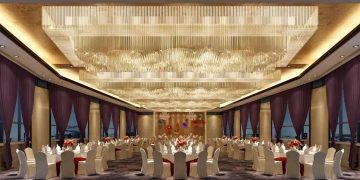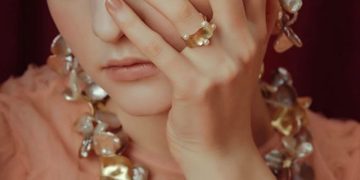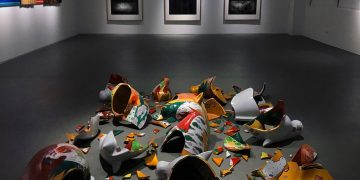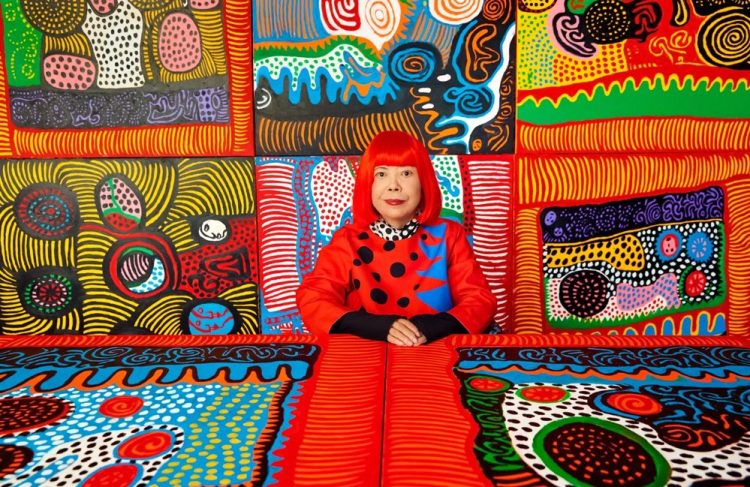Out of mental anguish, Yayoi Kusama somehow created some of the most delightful, meditative and terrifying works in contemporary art. Michele Chan charts a path through them
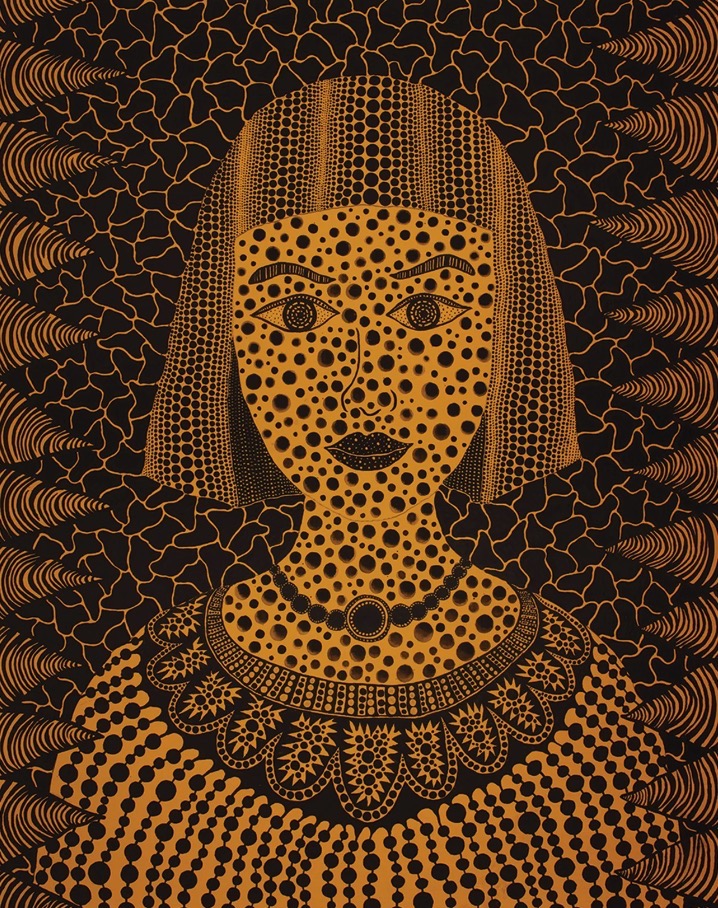
The exhibition is a sprawling Tim Burton wonderland. M+’s Yayoi Kusama: 1945 to Now, jointly curated by Doryun Chong, Chief Curator at M+, and independent curator Mika Yoshitake, features more than 200 works. It is encyclopaedic, densely hung – the largest-ever survey of Kusama’s work in terms of physical footprint – and will test the limits of how much visual, sensual, and mental stimulation you can withstand. For almost 80 years, Kusama has been cross-wiring eccentricity with grand spectacle, and the adrenaline-charged gusto of Chong’s debut special exhibition keeps pace with the artist’s compulsions. It hurtles from obsessive introspection to uplifting splendour to the downright creepy. If any of the grimmer works, often bearing desolate titles, threatens to overwhelm, the next shiny, spiky, or soft and squishy thing soon catches the eye – saving sensitive souls from toppling down the rabbit hole of existential despair.
That the show is such an exhilarating ride is due in large part to the curatorial structure. In contrast to past surveys that have predominantly been chronological, Yayoi Kusama: 1945 to Now frames Kusama’s extensive career within six themes, slicing through critical moments in her career to spread them spatially across the exhibition. ‘Infinity’ traces the rise and development of her Infinity Nets, while ‘Accumulation’ bears witness to the morphing and mutating of Kusama’s iconic soft sculptures and mixed media works over the decades; these sections are undercut by Kusama’s philosophies of self-obliteration and interconnectivity. ‘Radical Connectivity’ presents archival material of performances and film collaborations, including never-before exhibited videos of performances from the 1980s, ‘Biocosmic’ draws attention to the simultaneous earthly and cosmic nature of Kusama’s distinctive forms, while the last sections, ‘Death’ and ‘Force of Life’, juxtapose Kusama’s lifelong struggles with depressive and suicidal tendencies with her vital creative life force, which ultimately – and repeatedly – triumphs.
“The thematic structure allows for the presentation of a more complex chronology,” explains Chong, “and a more three-dimensional understanding of Kusama’s life and work.” Each section contains its own inbuilt chronological narrative, while simultaneously interlinking with the next. As a result, there is an overall cyclical feel, a sense of recurrence. This is a show that demands not only close and slow viewing, but also second and third and fourth viewings, inviting visitors down many a path less travelled through Kusama’s vast and multifaceted oeuvre.

“Within each theme, we discover a pattern of breakthrough and return,” Chong continues. “Throughout her career, Kusama would experience creative breakthroughs, and consequently arrive at a ground-breaking new concept or form. The best example is her Infinity Nets from the late 1950s and early 1960s. She created these classical Infinity Nets for a few years and then stopped in the latter part of the 1960s. Then she returned in the 1980s, stopped again, and returned in the 1990s, and so on. Breakthrough and return – the pattern repeats and overlaps across the six themes.”
One of the most recent Infinity Nets on view is a panoramic multi-panelled work, aglow with techno-coloured hues. Displayed in the same room as the canonical New York period Infinity Nets, in all their monochromatic austerity, the presentation does not exalt the early creations over the later. In the adjacent ‘Accumulation’ section, the phallic covered armchair Accumulation No. 1, which Kusama made in 1962 in her Manhattan loft in the same downtown building as the studio of her friend and fellow artist Claes Oldenburg, is positioned directly opposite Shooting Stars (1992), a monumental configuration of 84 mixed-media boxes with silver spiky outgrowths, exhibited in her solo presentation in the Japan Pavilion at the 45th Venice Biennale in 1993. The mixed-chronological presentation is deliberate, says Chong. While previous retrospectives have tended to focus principally on Kusama’s 15 years in New York, Yayoi Kusama: 1945 to Now rebalances the narrative, giving equal emphasis to all periods in her career.
“The two decades bracketed by Kusama’s return to Japan in 1973 and her re-emergence on the international stage at the 1993 Venice Biennale is probably the least well-known,” says Chong, “but it is arguably the most important and critical phase in Kusama’s life.” After making a potent yet all-too-brief mark on the New York art scene in the 1960s, Kusama grew increasingly disillusioned and unstable towards the end of the decade. In 1973, triggered in part by the death of her close friend and partner Joseph Cornell, Kusama returned to Japan after a decade and a half abroad. After a suicide attempt following the death of her father in 1974, she checked herself into a psychiatric hospital in Tokyo in 1975. Here Kusama began to rebuild her mental stability by creating art. The 1970s to 1980s were extraordinary years that gave birth to extraordinary works: plagued by grief, mental illness, rejection from the Japanese art world, and lack of support from her family, Kusama turned to new mediums such as watercolour, pastels, and collage, paving the way for the diversity and versatility of her future output.
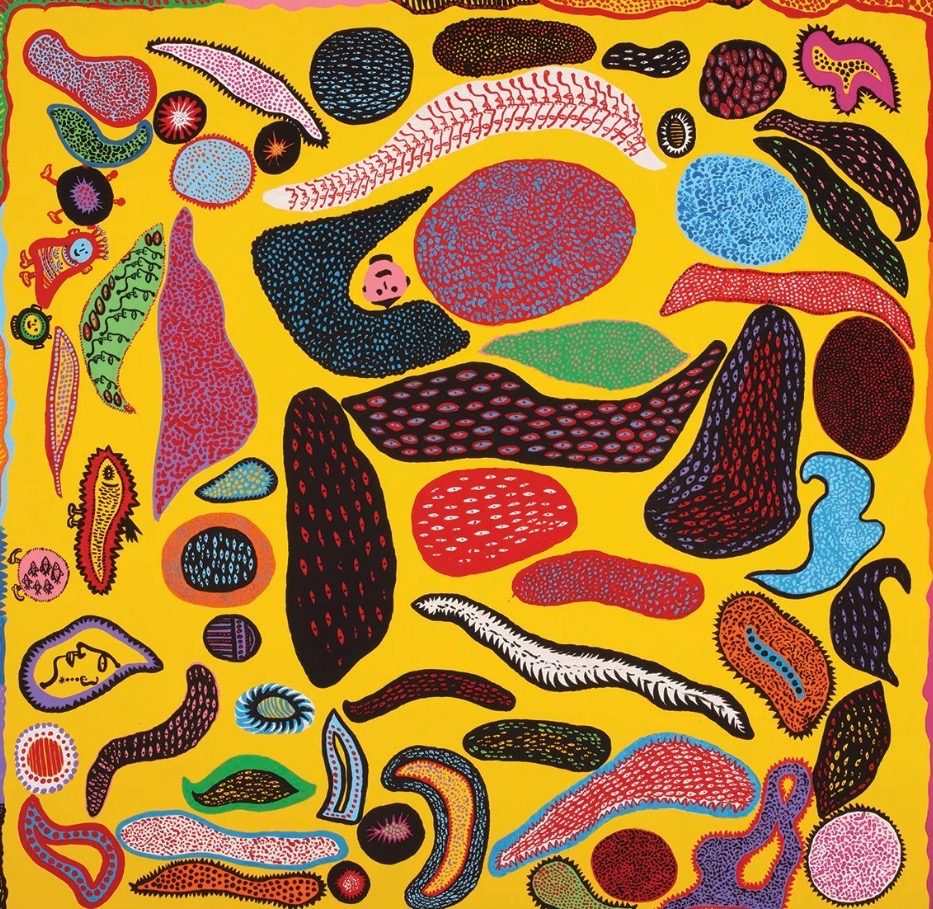
Many of these works are on display in the ‘Biocosmic’ section, which Chong reveals to be his personal favourite. “It is here that we really discover some big revelations. Each work is like a microcosmos in itself – like a little theatre.” The room begins with beautifully intricate pencil drawings and watercolours from the 1950s. These works reveal Kusama’s early obsession with organic and biomorphic forms, stemming in part from her childhood years in the mountainous region of Japan around Matsumoto. The adjacent wall displays watercolours and collages from the 1970s and 1980s; albeit intimately scaled and created with modest materials, each work is powerfully assertive and evocative, revealing the psyche of its creator to be at once tormented and muscular. The delightfully macabre box collages are simultaneously hair-raising (literally so with the one that contains a bulging mass of animal fur) and poignant, a nod to Cornell’s famous shadow boxes. At the centre of the room stand tree-like sculptures from the mid-1980s, sprouting unruly growths; monstrous, grotesque yet uncannily elegant and life-affirming, they represent Kusama’s steady ascent from disillusionment and desolation back onto the international stage.
The last two sections of the exhibition, ‘Death’ and ‘Force of Life’, give the conclusion of the exhibition a dramatic arc. In the ‘Death’ room, bone-chilling paintings such as Accumulation of the Corpses (1950) and Accumulation of the Corpses (Prisoner Surrounded by the Curtain of Depersonalization) (1950) hover against the haunting silhouettes of the shrine-like installation Death of a Nerve (1976) and the disembodied silver phallus frame A Gateway to Hell (1974). Enclosed in dark green walls, the ‘Death’ gallery is smothered in an eerie hush; it is with bated breath that we await the result of Kusama’s battle with her internal demons. We do not have to wait long, for through the next doorway she emerges triumphant: the final ‘Force of Life’ room displays a large selection of exuberant canvases from her ongoing series My Eternal Soul (2009-). Almost mural-like in their stacked presentation, the group of astonishing recent paintings, started when Kusama was already 80 years old, emanate vitality, strength, and joy in creation and existence. “A few people asked me – based on the works in ‘Force of Life’ – whether Kusama is now ‘cured’,” says Chong. “Relatedly, others have questioned whether the show wraps up too cleanly with a perfect happy ending. Such a reading, I’m afraid, completely misses the point.” What Yayoi Kusama: 1945 to Now demonstrates, in both form and content, is the eternally recurring cycles of Kusama’s life, psyche, and art – her repeated confrontation of mental illness by repeated and obsessive artmaking, and her recurring use of compulsively created forms and motifs as a method of self-consolation and healing. “Kusama is not an artist who goes from one phase to the next phase to the next, in a linear way. There are breakthroughs and then there are returns, and then everything repeats,” says Chong. Again and again she faced death and her demons head on, each time renewing her will to create as well as her will to live.
“Another way to understand it, although this might border on mythologising the narrative, is to recognise that the seeds of obsessions were always there, from the very beginning,” Chong says. “I’ll give you an amazing example. Circling back to the opening chamber of the exhibition, where the group of self-portraits is displayed, the earliest work is from 1950, when Kusama was just 20 or 21 years old. That’s the one with the dark ball of flame with a pair of floating lips below. It’s an incredible image in itself, which she titled Self-Portrait. When you look closely at the halo around the central mass, you will see the repeating pattern of the Infinity Net – the motif that would make its entrance into the official narrative eight years later. We only discovered this when the work arrived, because it came from the artist’s own collection. So this is one example that illustrates how all the ideas – or the ‘seeds of obsession’, to use the proper Kusama terminology – were always there from the very beginning.”










